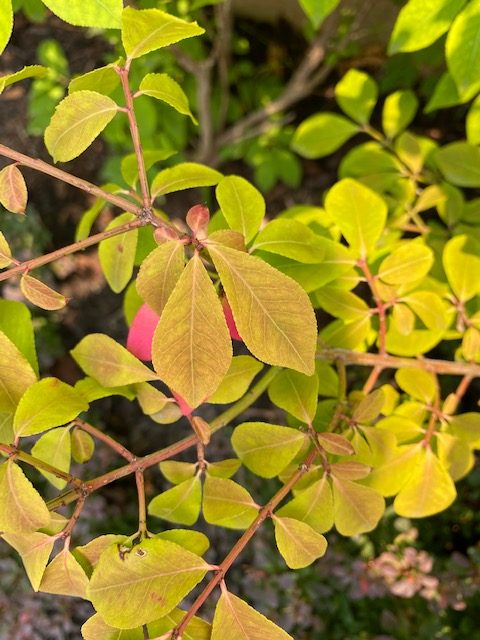
Hello,
We thought that our burning bushes were mysterioiusly dying this year, however, I have seen several other bush’s in the same condition around Toronto? Is there something in Toronto that is causing this? Are they dying or sinply just changing months early? Can I save them?
Thank you for contacting the Toronto Master Gardeners. Uniform yellowing of leaves is called chlorosis, and it occurs when the plant is stressed. There are many reasons for stress including temperature extremes, too little or too much water, root damage, nutrient deficiency and insects feeding.
Burning bush (Euonymus alatus) is a pretty tolerant and adaptable shrub, but it does not do well in wet, poorly drained soil, which can lead to root rot. It prefers consistent moisture, especially when grown in full sun.
The best way to find out about any nutrient deficiencies is to do a soil test. OMAFRA ( Ministry of Agriculture, Food and Rural Affairs ) has a list of accredited soil testing labs in Ontario. Specifics depend on the lab, but general you send them a sample and they will analyse the nutrients in your soil and provide a report and recommendations for any fertilization needs. Here is a link :
Accredited Soil Testing Laboratories in Ontario
Spider mites are the most common insect for E. alatus. They suck the plant juices from the leaves which can cause them to turn yellow. They are really tiny, like a grain of pepper, so you will need a magnifying glass to see them, usually in clusters on the undersides of leaves. They also create webbing around the leaves which might be visible. They can be controlled with a blast of water from your hose.
It is possible that your shrub has gone dormant early due to the early heat and temperature swings that we have experienced this spring and early summer, in which case the leaves will fall prematurely but they will be back next year as long as there is no other issue with your plant. My suggestion is to check for insects, and water only as needed to keep the soil evenly moist but not soggy. A soil test is always a good idea so that you know about the soil you are working with and what it needs for your plants to thrive. Then be patient and see what happens, and by all means you can contact us again if there are additional symptoms.
You might not be aware that E. alatus is considered to be an invasive plant by the Ontario Invasive Plant Council. It produces a prolific amount of berries and the seeds can germinate both in sunny and shady conditions. Birds aid in seed dispersal. It also reproduces vegetatively by root suckering. It is of particular concern when it is in a garden next to open woodland. Here is a link to a publication from the Ontario Invasive Plants Council that provides more information and suggested alternative plants, if you would like to consider replacing your shrub :
Hopefully this information is helpful.

